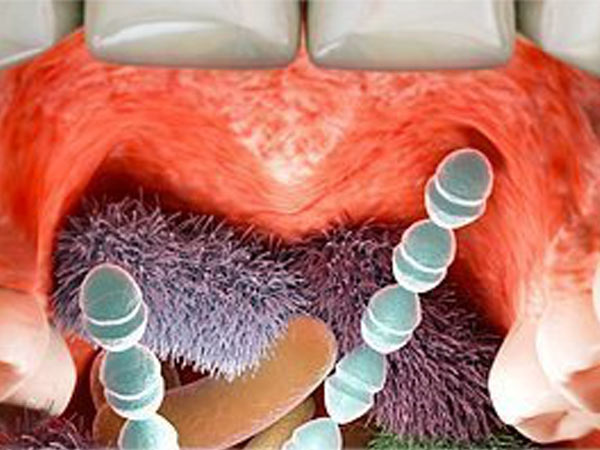Some of you may have heard that the human mouth is one of the dirtiest places on earth. While this may be an overstatement, there is some truth behind it. In fact, the human mouth has been found to host over 700 different types of bacteria!!! The species of bacteria that is present at any given time in a person is highly dependant on oral hygiene, diet, and individual physiology and bacterial flora. For a quick biology refresher, bacteria can be characterized as gram positive or gram negative based on their physiological makeup. When cultured, gram positive bacteria stain violet due to their thicker outer wall, and are generally more susceptible to antibiotics. Gram negative bacteria on the other hand stain pink and tend to be significantly more resistant.
Some of the most common families of oral bacteria, to name just a few, include:
- Streptococci – Gram negative cocci
- Lactobacilli- Gram positive rods
- Staphylococci – Gram positive cocci
- Corynebacteria- Gram positive rods
- Actinomyces- Gram positive rods
- Enterobacter- Gram negative rods
- Fusobacterium- Gram negative
- Granulicatella – Gram positive
- Haemophilus- Gram negative rods
- Leptotrichia- Gram negative rods
- Neisseria- Gram negative
- Porphyromonas- Gram negative rods
- Prevotella- Gram negative rods
- Rothia- Gram negative
- Serratia- Gram negative rods
- Vellionella – Gram negative cocci
What makes the mouth so appealing to these little buggers is the conditions naturally provided by the oral anatomy; in other words, it’s a warm, dark, damp home with the added bonus of frequent food supply! In addition, the mouth as a whole provides plenty of different locations for a bacterium to call home. Whether it is the teeth, gums, tongue, throat, palate, or surrounding structure, the ones that live there are highly specialized for that particular location, and make up a group called the natural flora.
The Teeth
- Teeth are home to gram positive cocci, gram negative cocci and rods, and gram positive rods and filaments. These are the bacteria responsible for creating the plaque on your teeth, also called biofilm. Plaque itself is simply a community of bacteria living and working together on the surfaces of your teeth! Once the plaque is allowed to harden over time, it becomes known as calculus. The calculus provides further structure for even more plaque formation.
The Gums
- Healthy gums are home to lots of gram positive cocci, gram positive rods, gram negative rods and cocci, and spiral form bacteria. In unhealthy gums, a higher percentage of the bacteria present will be anaerobic microbes. When bacteria is allowed to accumulate in the pockets of the gums, a natural inflammatory response is triggered leading eventually to tissue and bone loss.
The Tongue
- The tongue holds a variety of different bacteria that can ultimately be found all over your mouth, as well as a few specialized types that call the tongue their home. Compared to other locations in the oral cavity, the tongue is the most populated area. Some of these bacteria include the ones responsible for bad breath, including P.gingivalis, Fusobacterium, and P. intermedia. In a diseased tongue, the most common perpetrators are Herpes Simplex virus, members of the Streptococcus family, and Candida (yeasts).
When the normal flora becomes disrupted, disease causing bacteria have an opportunity to take over, leading to tooth decay and periodontal disease. A mouth that is in that type of state tends to have more gram negative cocci bacteria, rods, filaments, and anaerobic bacteria. Maintaining routine oral hygiene procedures can help keep your natural flora in check and ultimately stay in tip-top dental health!
Daily brushing at least twice a day helps to physically remove plaque from the tooth surfaces. Plaque, or biofilm, is constantly growing, requiring frequent physical removal to keep it at healthy levels.
Flossing at least once a day helps to remove the plaque and tarter buildup between the teeth, where brushing alone cannot reach. It also helps dislodge any pieces of food that may be leftover, therefore removing the bacteria’s food source.
Eating a balanced diet without excessive sugar. Bacteria on your teeth metabolize the sugars from your diet, producing acid in the process, which causes the tooth structure to de-mineralize. When de-mineralization occurs faster than re-mineralization, tooth decay occurs.
Stop smoking! Studies have shown that tobacco and the associated carcinogens can disrupt your healthy oral bacteria, leading to an opportunity for the disease causing ones to proliferate far beyond normal levels.
See your dentist for your routine hygiene visits! Professional hygiene exams are vital to staying on top of your oral health.
If it has been more than six months since your last hygiene exam, call us today!


